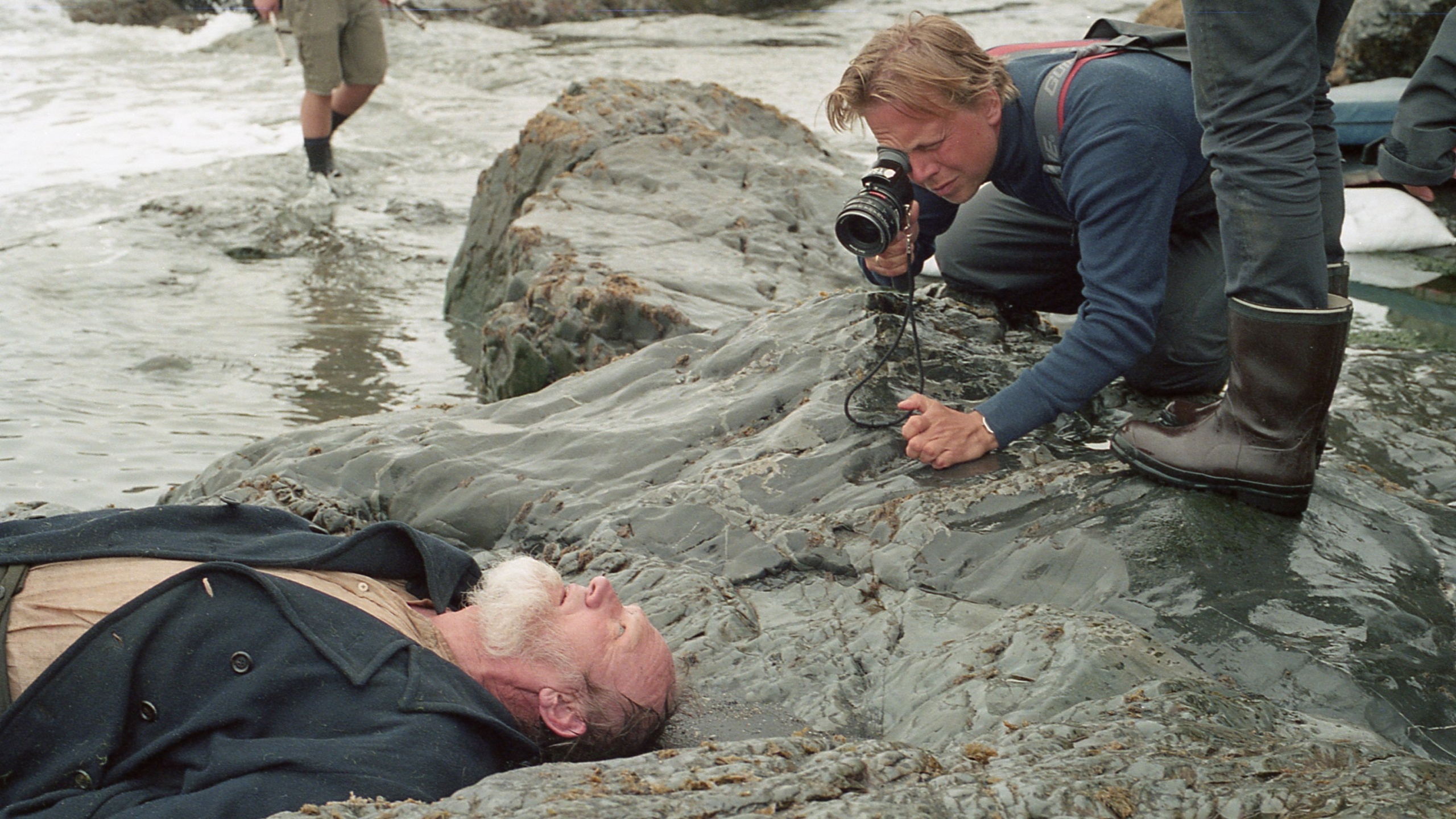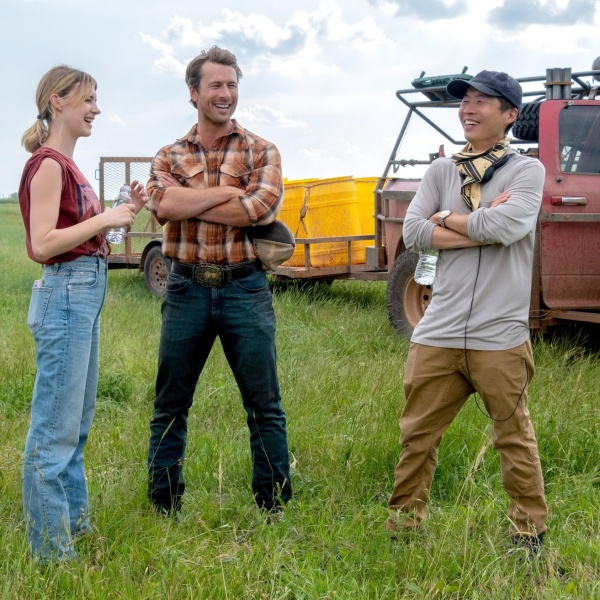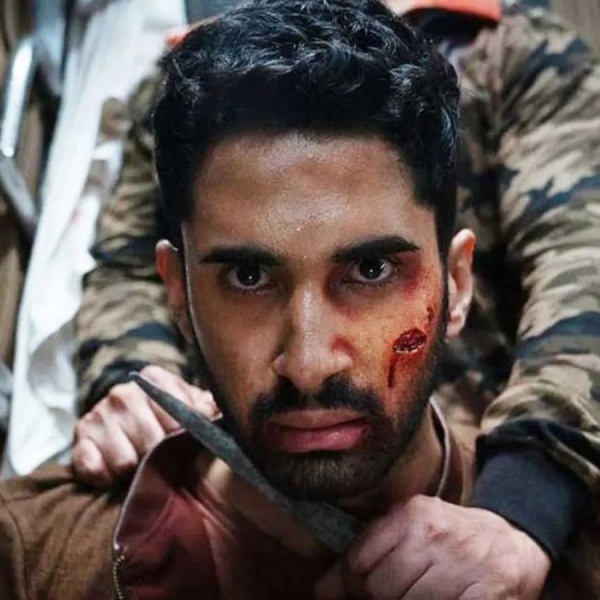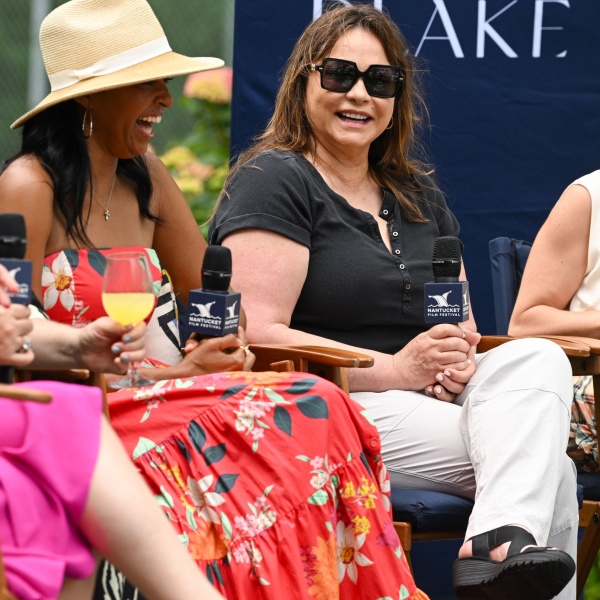For an island nation with a total population of just over 376,000 inhabitants, Iceland has impressively positioned its local cinema internationally over the last decade. The latest in the country’s consistent output of acclaimed homegrown productions is the arresting historical drama “Godland,” the third feature from writer-director Hlynur Pálmason and Iceland’s current entry at the Oscars in the Best International Feature Film category.
Pálmason’s most ambitious effort yet, “Godland” sees 19th century Danish priest Lucas (Elliott Crosset Hove) embark on a treacherous odyssey across Iceland’s vast and inhospitable terrain to oversee the construction of a Lutheran church. Throughout this gnarly excursion, the arrogant religious man, who drags along a photographic camera, will clash with Ragnar (Ingvar Sigurdsson), his rugged Icelandic guide far more attuned to nature’s indomitable power.
Since Iceland was still a colony of the Kingdom of Denmark at the time, the auteur extrapolates the men’s dueling relationship to explore the shared history between his homeland and the neighboring Scandinavian state, each of which has shaped him personally and artistically.
As a student in Iceland during the 1990s, learning Danish at school was compulsory for the filmmaker. That’s not the case anymore; his children can now choose which foreign tongue they want to pursue. “When I was little, I had to learn it. For me it was a gift because I later on went to Denmark to study film,” Pálmason said. “But nobody there speaks Icelandic or understands a word. We are so few in Iceland. The language is precious. It’s fragile.”
Based on the film’s opening title card, which explains that the story is inspired by the discovery of photos taken in Iceland in the 1800s, viewers may assume the events depicted in “Godland” actually occurred centuries in the past. But while Pálmason did an extensive investigation on the period, both the images and the people on screen are pure fiction.
To get a sense of how seamen working on the boats that transported people back and forth between Iceland and Denmark then, he read plenty of traveling books. Details about their everyday activities — what they ate, where they slept, how they made coffee on a glacier — made the world more tangible for him before he started writing his own fictionalized account. Ultimately, however, seeking historical accuracy encumbered his process.
“After a while of researching and reading a lot, I was becoming more and more stiff, and uncreative and the script was feeling more and more monotone, dialogue-heavy, religious, and a lot of things that I really didn’t want it to be,” said Pálmason.

What ultimately convinced the filmmaker to continue on was the decision to have Lucas carry an early camera to document the trip. Pálmason was intrigued by the types of photos such a character would take and by the situations surrounding the moments when he would capture those images of landscapes and humans. “That idea gave the whole project a boost and it became much more desirable, but therefore also much more fictional,” he said.
There’s a visceral quality to how nature is portrayed in “Godland.” At once brutal and miraculous, its duality mimics the worst and most inspiring traits in human nature. Pálmason believes one timelapse in particular, focused on a death horse, illustrates this.
“The form of a horse is beautiful, but when a horse dies, it also goes through a very brutal rotting phase where there are worms,” he explained. “But then the landscape around the horse gets nourished and then becomes luscious and green. There’s a lot of beauty in death and the whole film explores these opposites putting them up against each other.”
That mesmerizing portrait of an animal’s decay, as well as another timelapse of Lucas, were shot two full years prior to principal photography so that he could witness the changing seasons. Pálmason always scouts for locations as he writes his screenplays to immerse himself and draw inspiration directly from those spaces where he will eventually shot.

“If I go to the locations very early on — I go there during summer, then during autumn, and winter, and spring — I can figure out what season the story is in,” he said. “I try to create a lot of ways to lose myself in the film and just hope that it takes over me.”
Pálmason started working on his three features thus far — “Winter Brother (2017); “A White, White Day” (2019); and “Godland” — at the same time, switching his focus between projects every couple of months. He was able to do so because he always knew he was writing them for actors Crosset Hove and Sigurdsson, whom he’d known since his film school days. The director remembers that back then his intentions were to collaborate with non-professional actors, but he changed his mind upon meeting his two male muses.
Danish-born Crosset Hove was the lead in “Winter Brothers,” playing a limestone miner on the brink of losing himself, while Icelandic thespian Sigurdsson served as the protagonist in “A White, White Day” where he embodied a widower convinced his wife was having an affair. Before coming together for “Godland,” the duo had starred in Pálmason’s 2013 short film “A Painter,” as recluse artist (Sigurdsson) and his maladjusted son (Crosset Hove).
“I’ve always written for what I know, and that’s why our films are a bit homemade. They’re very local. All of our wives and kids play supporting characters. The locations are places that I know personally, and the objects are often our things,” Pálmason explained. “My films are totally fictional, but there’s something about working with my surroundings that feels real. And that also makes them personal in a way, but not private.”

Despite taking place in different contexts and time periods, Pálmason believes the three films are connected thematically (they all observe the world from a masculine perspective), and more importantly, that they are formally in synch. “They have a similar body,” he said. There’s a meditative potency to all of them achieved via the imagery he chooses to highlight as part of a visual language that feels profoundly tied to something profoundly elemental.
One unifying device present in all of Pálmason’s features is a montage of several tableaux vivants or portraits of the characters or meaningful objects in them. He doesn’t always know where in the timeline he will place this sequence that sort of takes stock of all the significant parts of the narrative and gives each of them a moment of acknowledgment.
“Often those scenes are like a place where you can take a deep breath before you go under into the story again,” Pálmasonsaid. “They give the film a physicality. If there’s a very important coffee cup or car or whatever, I always make a portrait of it.“
Uncertain of whether “Godland” marks the last time he’ll used this signature motif, for now, Pálmason will continue filming people, places, and things up close. To him, the atmosphere, temperament, and rhythm of a film are just as relevant as the themes it expresses. “There are so many stories, so many characters I want to explore, but none of them are worth exploring if the form isn’t interesting,” he said. “A film is not only story, but the form of it is also as important. And these things have to fit together for it to be cinema.”





